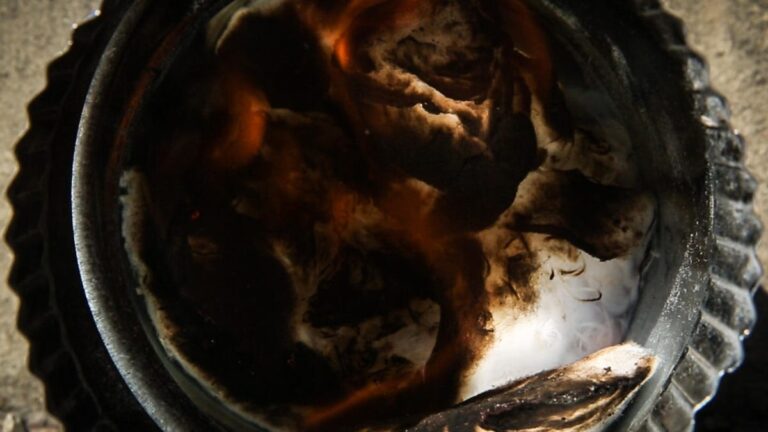Spring is the perfect time to tackle those hidden trouble spots around the house, and your dryer vent should be high on the list. While it might not be as obvious as cluttered closets or dusty shelves, a dirty dryer vent is one of the biggest home fire hazards. And even if it doesn’t spark a fire, it can quietly drain your time, energy and money.
If your dryer used to handle loads in one cycle but now struggles to get the job done, it’s likely not the machine — it’s your vent. Lint, dust, and debris buildup inside the ductwork can seriously impact performance and efficiency. Giving it a good clean this spring can help your dryer run smoother and save you money on your energy bills, which, according to a recent CNET Money survey, are already stressing out nearly 80% of US adults. A quick clean now can make laundry faster, cheaper and safer all year long.
Also read: Best Robot Vacuums of 2024: Roomba and Ecovacs Tie for Best Overall
Step 1: Locate your duct
In order to properly clean your dryer’s ventilation system, you have to first know where it is and where it ends. In back of most dryer units is a short 4-inch diameter exhaust. This exhaust connects to dedicated ductwork inside the wall through an aluminum elbow or other pipe. Hot air travels along these metal pipes to eventually emerge through an opening on an outside wall of your house.
In my particular setup, the dryer exhaust joined a duct at the foot of a wall inside my laundry room. Located in the basement, from there it runs to an exit vent at ground level and a few feet to the right of my front door. Capping the exist is a louvered plastic cover. It opens to let warm air escape but stays shut otherwise to keep animals out.
Step 2: Safely disconnect the dryer
Now that you know the start and end points of your duct, it’s time to disconnect the dryer. It’s a simple task if you own an electric dryer. First unplug the machine’s power cord from the wall outlet. Next remove any metal tape or clamps keeping the dryer vent pipe fixed to its exhaust. If it’s easier you might only want to remove material attaching the vent to the duct inside the wall.
Gently pull the vent pipe away from the wall duct. If your dryer is electric you should be able to push the appliance out of the way without any issues. This will open up more space to work.
Homeowners with dryers that run on natural gas need to be more careful. Make sure not to disturb the dryer’s gas line too much if you need to reposition the unit. Like gas ranges, the fuel hookup usually consists of a flexible steel hose. The hose should be tightly attached but it’s best to play it safe. Gas leaks are serious and dangerous business. If at any point you’re unsure, call in a professional.
Step 3: Clean, clean, clean
At this point you should have clear access to the dryer duct opening at the laundry room wall. You can also easily get at the exit point outside the house by removing its duct flap or duct cover. Next you need to buy a specialized dryer vent cleaning kit. I picked this one up at my local Home Depot for $19. It consists of a lint brush and six 2-foot-long flexible segments. You join these parts together to form a rod that spans a full 12 feet.
In my case I purchased an additional unit which both doubles its reach and provides a back-up brush head for safe keeping. The end of the nifty contraption also fits inside standard power drill chucks. So armed, you’ll be able to spin the brush with a good amount of speed and power.
Insert the brush end of the rod into your duct. I decided to enter from the outside of the house since that’s its highest point. The idea was to use gravity as an aid to clear lodged debris. It’s easier to collect lint on my laundry room floor too than it is from inside my mulch-covered flower garden.
While spinning the rod (counter clockwise to avoid unscrewing its segments), push the brush as far as you can down the duct. Hopefully you’ll have enough length to reach the duct’s other end. Keep in mind the process might take a few tries depending how many twists and turns your ductwork may have.
Step 4: Tidy up, reconnect everything
If your dryer vent is anything like mine, expect a lot of lint to come flooding out of the wall. The amount of junk that littered the laundry room floor brought my upright vacuum to its knees. In the end I had to clean out the vacuum twice to return it to working order. In hindsight, I suggest using a simple broom and dustpan.
After everything is tidy, put everything back the way it was — with one exception. If your dryer used a soft foil-style vent to link to the wall duct, get rid of it. These hoses are a known fire risk. I personally replaced the original semi-rigid venting with a pair of 90-degree aluminum elbows. Adjustable yet hard, they’re durable and provide the best airflow period.
Step 5: Do a trial run and smile
No doubt about it. Giving your dryer duct a thorough cleaning is sweaty, messy work. Two years of duct neglect was all it took to effectively cripple my old dryer. A quick trial run post-cleaning, however, confirmed the appliance had regained all its power. Not only would I not have to buy an expensive new unit, I’d put the kibosh on the risk of a scary dryer fire. Now that’s a worthwhile chore.
Read the full article here

